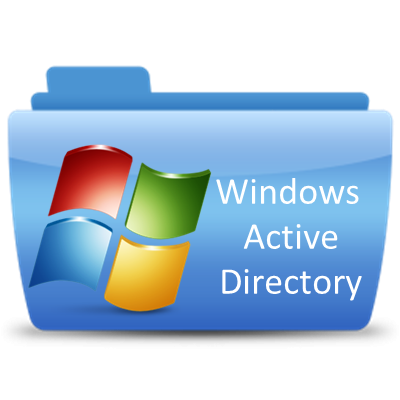Leaderboard
Popular Content
Showing content with the highest reputation on 09/11/2017 in all areas
-
Version 1.6.3.0
18,782 downloads
Extensive library to control and manipulate Microsoft Active Directory. Threads: Development - General Help & Support - Example Scripts - Wiki Previous downloads: 30467 Known Bugs: (last changed: 2020-10-05) None Things to come: (last changed: 2020-07-21) None BTW: If you like this UDF please click the "I like this" button. This tells me where to next put my development effort1 point -
1 point
-
I finally figured it out. This works for Small Business Server 2008 and may help for other servers. First step is to run, on a domain-joined computer: #include <AD.au3> _AD_Open() ConsoleWrite($sAD_DNSDomain & @CRLF) ConsoleWrite($sAD_Configuration & @CRLF) _AD_Close() The first value printed is the third parameter for _AD_Open and the second value printed is the fifth parameter for _AD_Open. On the server, do the standard MMC dance to manage certificates. Select "Computer Account". Under Personal certificates, export the server's self-signed CA certificate (mine is <domain>-<servername>-CA) and the third-party certificate for the external URL (mine is mail.<redacted>.com), including the private key. Note that the third-party certificate has to include "Client Authentication" in its intended purpose. On the client, again do the standard MMC dance selecting "Computer Account" and import the self-signed certificate into the "Trusted Root Certification Authorities" store. You might have to import your third-party CA certificates into this store too, such as Go Daddy Class 2 Certification Authority and Go Daddy Root Certificate Authority. Open Internet Explorer and click the settings gear and select Internet Options (or Control Panel | Internet Options.) Then Content tab | Certificates | Import and import the third-party certificate. Now: _AD_Open("<username>", "<password>", "DC=<redacted>,DC=local", "mail.<redacted>.com", "CN=Configuration,DC=<redacted>,DC=local", 3) works a treat.1 point
-
This is an old and well known issue. Just replace Return _WinAPI_DefSubclassProc($hWnd, $iMsg, $wParam, $lParam) with Return DllCall( "comctl32.dll", "lresult", "DefSubclassProc", "hwnd", $hWnd, "uint", $iMsg, "wparam", $wParam, "lparam", $lParam )[0]1 point
-
;#RequireAdmin ;No console #Region ;Wrapper #AutoIt3Wrapper_UseUpx=n #AutoIt3Wrapper_UseX64=n #AutoIt3Wrapper_Run_Tidy=y #AutoIt3Wrapper_Res_SaveSource=y #AutoIt3Wrapper_Run_Debug_Mode=n ;#AutoIt3Wrapper_Icon= ;#pragma compile(CompanyName, '') ;#pragma compile(ProductVersion, ) ;#pragma compile(FileVersion, ) #pragma compile(x64, false) ;#AutoIt3Wrapper_Res_Comment= ;#AutoIt3Wrapper_Res_Icon_Add= ;#AutoIt3Wrapper_Res_Description= #AutoIt3Wrapper_AU3Check_Parameters=-d -w 1 -w 2 -w 3 -w- 4 -w 5 -w 6 -w- 7 #EndRegion ;Wrapper ;====================================================================================== #include <Misc.au3> #include <Timers.au3> #include <Constants.au3> #include <StaticConstants.au3> #include <WindowsConstants.au3> #include <GUIConstantsEx.au3> #include <MsgBoxConstants.au3> #include <WindowsConstants.au3> ;============================================================================= Opt("MustDeclareVars", 1) Opt("TrayIconDebug", 1) Opt("TrayMenuMode", 1) Opt("TrayIconHide", 0) Opt("GUIOnEventMode", 1) Opt("TrayAutoPause", 0) Opt("TrayOnEventMode", 1) Opt("MouseCoordMode", 2) ;============================================================================= Local $Winlist, $IniRead, $ExitItem ;============================================================================= $ExitItem = TrayCreateItem("Close") TrayItemSetOnEvent(-1, "Quit") AdlibRegister('time', 1000) ;============================================================================= While 1 If WinExists("[CLASS:MozillaWindowClass]") Then $Winlist = WinList("[CLASS:MozillaWindowClass]") For $t = 1 To $Winlist[0][0] If StringInStr($Winlist[$t][0], 'Mozilla Firefox') <> 0 Then If FileExists(@ScriptDir & '\temp.ini') Then $IniRead = IniReadSection(@ScriptDir & '\temp.ini', 'Windows') If Not @error Then If $IniRead[0][0] <> 0 Then For $w = 1 To $IniRead[0][0] If $IniRead[$w][1] = $Winlist[$t][1] Then ConsoleWrite(' - ' & @MSEC & @CRLF) Else IniWrite(@ScriptDir & '\temp.ini', 'Windows', $Winlist[$t][1], $Winlist[$t][0]) EndIf Next EndIf Else IniWrite(@ScriptDir & '\temp.ini', 'Windows', $Winlist[$t][1], $Winlist[$t][0]) EndIf Else IniWrite(@ScriptDir & '\temp.ini', 'Windows', $Winlist[$t][1], $Winlist[$t][0]) EndIf EndIf Next EndIf Sleep(400) WEnd ;============================================================================= Func Time() ;WIP If FileExists(@ScriptDir & '\temp.ini') Then $IniRead = IniReadSection(@ScriptDir & '\temp.ini', 'Windows') If Not @error Then If $IniRead[0][0] <> 0 Then For $w = 1 To $IniRead[0][0] ;$IniRead[$w][0] Next EndIf EndIf EndIf EndFunc ;==>Time ;====================================================================================== Func Quit() FileDelete(@ScriptDir & '\temp.ini') Exit EndFunc ;==>Quit ;====================================================================================== A work in progress, detects new windows, but doesn't have any timer yet.1 point
-

Automation of multiple Web pages
VaishnaviBUtpat reacted to Danp2 for a topic
This is the third thread that you have started on the same subject. I tried to assist you in the other two, but you failed to respond essentially abandoning the thread. What's going to be different about this one? Suggest that you review the prior threads.1 point -
This returns an array with the numbers inside $array = StringRegExp($response, '(\d{3}\.\d{3})', 3)1 point
-
@iamtheky : here is a commented version :1 point
-

Would it be possible to find and remove hyperlink in Word document?
KickStarter15 reacted to water for a topic
Something like this? #include <Word.au3> #include <msgBoxConstants.au3> HotKeySet("{F2}", "_DeleteHyperLink") Global $oWord = _Word_Create() Global $oDoc = _Word_DocOpen($oWord, @ScriptDir & "\test.docx") Global $oLinks = _Word_DocLinkGet($oDoc) Global $oLink, $sTitle = "Link Removal Tool", $iCount = 0, $sLinkExclude = "https://doi.org/" If MsgBox(BitOR($MB_ICONQUESTION, $MB_YESNO), $sTitle, "Do you want to remove all Hyperlinks (except " & $sLinkExclude & "*)?") = $IDYES Then _RemoveAll() MsgBox($MB_ICONINFORMATION, $sTitle, "Hyperlinks removed: " & $iCount) Else _RemoveSelected() EndIf Exit Func _RemoveSelected() MsgBox($MB_ICONINFORMATION, $sTitle, "Number of Links in this document: " & $oLinks.Count) $iCount = 0 For $i = $oLinks.Count To 1 Step -1 $oLink = $oLinks($i) $oLink.Range.Select MsgBox(0, "Hyperlink", "Address: " & $oLink.Address & @CRLF & _ "Name: " & $oLink.Name & @CRLF & _ "SubAddress: " & $oLink.SubAddress & @CRLF & _ "TextToDisplay: " & $oLink.TextToDisplay & @CRLF & _ "Type: " & $oLink.Type & @CRLF & @CRLF & _ "Press 'F2' if you want to remove this Hyperlink, then close this MsgBox!") Next MsgBox($MB_ICONINFORMATION, $sTitle, "Hyperlinks removed: " & $iCount) EndFunc ;==>_RemoveSelected Func _RemoveAll() $iCount = 0 For $i = $oLinks.Count To 1 Step -1 $oLink = $oLinks($i) If IsObj($oLink) And StringLeft($oLink.Address, StringLen($sLinkExclude)) <> $sLinkExclude Then $oLink.Delete $iCount = $iCount + 1 Endif Next EndFunc ;==>_RemoveAll Func _DeleteHyperLink() If IsObj($oLink) Then $oLink.Delete $iCount = $iCount + 1 EndIf EndFunc ;==>_DeleteHyperLink1 point -
to ANSI I think https://stackoverflow.com/questions/700187/unicode-utf-ascii-ansi-format-differences Saludos1 point
-
@artepad There is no error in your response. You also could set isOverlayRequired to false to get just the ParsedText without the TextOverlay information. You can use some Json UDF to parse the response or just use some string manipulation. Saludos1 point
-

Would it be possible to find and remove hyperlink in Word document?
KickStarter15 reacted to water for a topic
Something like this: #include <Word.au3> HotKeySet("{F2}", "_DeleteHyperLink") Global $oWord = _Word_Create() Global $oDoc = _Word_DocOpen($oWord, @ScriptDir & "\test.docx") Global $oLinks = _Word_DocLinkGet($oDoc) Global $oLink MsgBox(0, "", "Number of Links in this document: " & $oLinks.Count) For $i = $oLinks.Count To 1 Step -1 $oLink = $oLinks($i) $oLink.Range.Select MsgBox(0, "Hyperlink", "Address: " & $oLink.Address & @CRLF & _ "Name: " & $oLink.Name & @CRLF & _ "SubAddress: " & $oLink.SubAddress & @CRLF & _ "TextToDisplay: " & $oLink.TextToDisplay & @CRLF & _ "Type: " & $oLink.Type & @CRLF & @CRLF & _ "Press 'F2' if you want to remove this Hyperlink, then close this MsgBox!") Next Func _DeleteHyperLink() If IsObj($oLink) Then $oLink.Delete EndFunc ;==>_DeleteHyperLink The links need to be processed from last to first. Like you would delete rows from an array.1 point -
Hi. Look at this thread in AutoIt wiki: https://www.autoitscript.com/wiki/FAQ#Why_does_the_Ctrl_key_get_stuck_down_after_I_run_my_script.3F Conrad1 point





